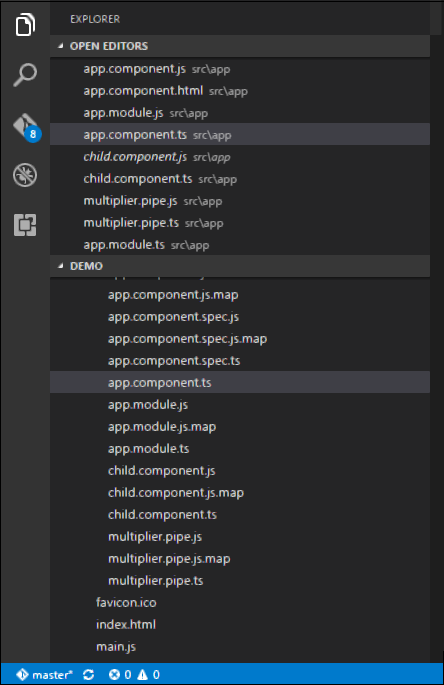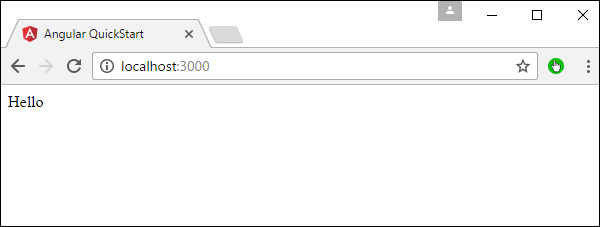Angular 2 - 嵌套容器( Nested Containers)
在Angular JS中,可以将容器嵌套在彼此内部。 外部容器称为父容器,内部容器称为子容器。 让我们看看如何实现这一目标的示例。 以下是步骤。
Step 1 - 为名为child.component.ts的子容器创建一个ts文件。

Step 2 - 在上述步骤中创建的文件中,放置以下代码。
import {
Component
} from '@angular/core';
@Component ({
selector: 'child-app',
template: '<div> {{values}} </div> '
})
export class ChildComponent {
values = '';
ngOnInit() {
this.values = "Hello";
}
}
上面的代码将参数this.values的值设置为“Hello”。
Step 3 - 在app.component.ts文件中,放置以下代码。
import {
Component
} from '@angular/core';
import {
ChildComponent
} from './child.component';
@Component ({
selector: 'my-app',
template: '<child-app></child-app> '
})
export class AppComponent { }
在上面的代码中,请注意我们现在正在调用import语句来导入child.component模块。 我们还从子组件调用“child-app”选择器到我们的主要组件。
Step 4 - 接下来,我们需要确保子组件也包含在app.module.ts文件中。
import {
NgModule
} from '@angular/core';
import {
BrowserModule
} from '@angular/platform-browser';
import {
AppComponent
} from './app.component';
import {
MultiplierPipe
} from './multiplier.pipe'
import {
ChildComponent
} from './child.component';
@NgModule ({
imports: [BrowserModule],
declarations: [AppComponent, MultiplierPipe, ChildComponent],
bootstrap: [AppComponent]
})
export class AppModule {}
保存所有代码更改并刷新浏览器后,您将获得以下输出。

